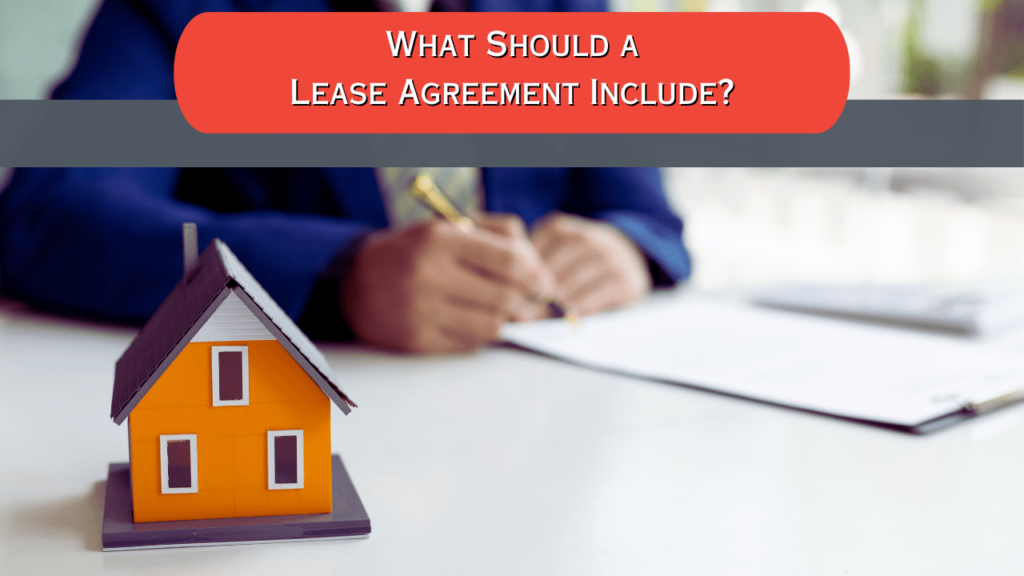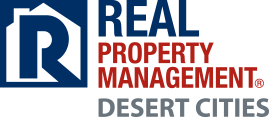What Should a Palm Springs Lease Agreement Include?

Every Palm Springs rental property needs a lease agreement when tenants are approved to move in. The lease is the most important document in your relationship. It sets forth the expectations of the tenancy. It lists the responsibilities of the owner and the tenant. It provides direction if there’s a dispute, conflict, or question.
You’ll need a lease that’s compliant and enforceable in California. Make sure you’re using a Palm Springs lease agreement that has been provided by an attorney, a property manager, or an association that deals with rental properties such as the California Apartment Association. It may seem easy to download any lease template you find on the internet, but California has very specific lease clauses, terms, and disclosures that will need to be included.
If you’re writing a lease for the first time and you’re not sure what it should include, we’re providing some basics. This is not an extensive list of what your California-specific lease agreement needs, but it is a good starting point.
Your Lease Must Identify Landlords, Tenants, and Property Managers
At its most basic function, the lease states who is renting out the property and who owns the property. You’ll need a lease agreement that identifies the property owner, the tenants, and if applicable, the property managers.
Start by listing all the people living in your property. Tenants will include every adult who was screened and is financially responsible for rental payments and the property. Include the names and contact information for all of your tenants, and add any occupants who are minors and not responsible financially. These will be occupants rather than tenants.
The lease agreement should include the name of the property owner or owners. When you’re working with a Palm Springs property manager, it’s critical to include their name and contact information. That’s the person tenants will want to reach if something goes wrong. Your property manager is also a listed agent who can receive paperwork on your behalf, file insurance claims, and manage the financial aspects and physical aspects of your rental property.
Establish Lease and Renewal Terms
For the purposes of this blog, we’re talking about long term tenants who are signing a lease agreement that’s for a period of a year (or longer). For shorter term tenants or vacation properties, you’ll want a rental contract instead of a lease agreement, and that’s going to look a little different. Here’s what you need to include in the lease in terms of length and renewal instructions:
- How long is the lease agreement? You want to make sure it’s clear when the lease begins and when the lease ends. Include a start date and an end date.
- What happens when the lease ends? You’ll need to include some language around what happens at the end of the lease term. We have seen lease agreements wherein the residency automatically switches to a month-to-month tenancy. That’s one option, or you could establish a lease renewal process.
- How much notice must the tenant give before vacating? You’ll want to establish move-out and renewal instructions in your lease agreement. Typically, it’s 60 days.
Rent Collection Policy and Security Deposit Information
Collecting rent on time is critical to the success of your Palm Springs investment property. This is why it’s so important to include your rent collection policy in your lease agreement. You should talk about your policy of on-time rent collection with your tenants, but you also want to have this documented somewhere in your lease.
A good rent collection policy will:
- Establish how much rent is due
- Establish when rent is due
- Provide information about grace periods. When is rent considered late?
- Explain late fees and penalties for late rent.
- Reference how rent should be paid. You might accept online payments, you might accept checks through the mail, or you might want in person payments. Be specific in the lease.
Security deposits must also show up in the lease agreement. You’ll want your lease to reflect how much was collected. Remember that California limits what you can take from a tenant as a security deposit to the equivalent of two months’ rent for an unfurnished property.
Landlord and Tenant Maintenance Responsibilities
A lease agreement must include language that explains who is responsible for what when it comes to maintenance, upkeep, and cleaning. This will eliminate any confusion with your tenants about what they’re expected to be doing and what they can expect you to take care of. The biggest questions typically revolve around landscaping, especially in a single-family home. Who mows the lawn? It should be in the lease.
The lease must also talk about the process for reporting maintenance. You want to be clear about how maintenance is paid for. Typically, owners will take care of general maintenance, but if a resident or their guest causes a window to break or a door to come off its hinges, those damages will be billed to the tenant. If you want your tenants to be responsible for landscaping or pool maintenance, you’ll need to include that in the lease agreement as well.
Rules and Regulations in Lease Agreements
The lease should also include a list of rules and regulations that tenants must follow.
This may include a pet policy, a smoking policy, and a policy on guests. You’ll want to establish parking rules and set up quiet hours. The lease must provide reasons that a landlord or property manager can enter the property. If there are HOA rules and regulations, include them in your lease as well. Tenants can’t be expected to follow the HOA rules if they’re not aware of what they are.
Rent Control and California Disclosures
 Your lease agreement is also required to talk about rental increases. Since The Tenant Protection Act of 2019 was passed, landlords are now required to include information on the rent control law in their lease agreements. You’ll have to explain whether your property is included or exempt from the statewide rent control restrictions. Your lease must also note how often you can raise the rent and how much notice you’ll provide before the new rent goes into effect.
Your lease agreement is also required to talk about rental increases. Since The Tenant Protection Act of 2019 was passed, landlords are now required to include information on the rent control law in their lease agreements. You’ll have to explain whether your property is included or exempt from the statewide rent control restrictions. Your lease must also note how often you can raise the rent and how much notice you’ll provide before the new rent goes into effect.
Most California leases will require some specific addenda, based on changing laws and local requirements. Cover yourself by referencing mold, lead paint, bed bugs, and the “clear and reasonable” warning that you must provide tenants about hazardous materials and chemicals per Prop 65.
If you need help writing a lease agreement for your Palm Springs rental property, we’d be happy to help. Contact us at Xepco Properties.

